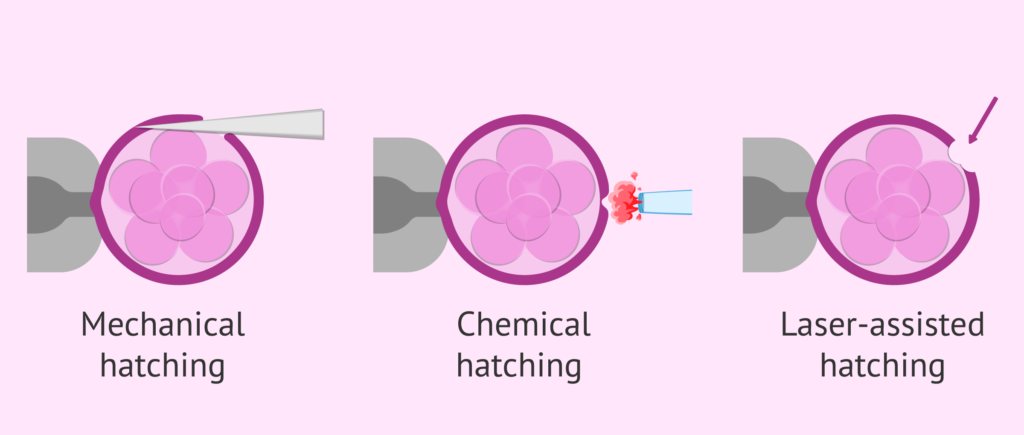Assisted Hatching For Embroys

What is Assisted Hatching?
Assisted hatching is a laboratory procedure performed during IVF to help embryos hatch from their outer shell (zona pellucida) before embryo transfer. The zona pellucida is a protective layer surrounding the embryo that must be breached for successful implantation into the uterine lining.
How Does Assisted Hatching Work?
Selection of Embryos: After fertilization, embryos are cultured in the laboratory until they reach a specific developmental stage suitable for assisted hatching.
Mechanical or Chemical Intervention: Assisted hatching can be performed using mechanical methods (microtools to create a small hole in the zona pellucida) or chemical methods (enzymes to weaken the zona pellucida).
Embryo Transfer: Once hatching is facilitated, the embryos are transferred into the woman’s uterus during an IVF cycle, typically on day 3 or day 5 after fertilization.
Benefits of Assisted Hatching:
- Enhanced Implantation Rates: Assisted hatching may improve the ability of embryos to implant into the uterine lining, particularly in cases where the zona pellucida is thick or hardened.
- Suitable for Certain Patient Profiles: It may be beneficial for women of advanced maternal age, those with previous IVF failures, or embryos with a thicker zona pellucida.
- Non-invasive Procedure: Assisted hatching is a relatively safe and non-invasive technique that does not significantly increase the risk of harm to the embryos.
Considerations and Success Rates:
While assisted hatching offers potential benefits, its effectiveness can vary based on individual factors such as embryo quality, maternal age, and the specific indications for the procedure. Fertility specialists carefully evaluate each case to determine the appropriateness of assisted hatching for optimizing IVF outcomes.
Risks and Limitations:
- Risk of Damage to Embryos: There is a slight risk of damaging the embryo during the assisted hatching process, although this risk is minimized with skilled techniques.
- Ethical Considerations: The use of assisted hatching raises ethical questions, particularly regarding the manipulation of embryos in laboratory settings.
Assisted hatching is a valuable technique in fertility treatment that aims to improve embryo implantation rates during IVF cycles. By understanding its benefits, considerations, and potential outcomes, individuals and couples can make informed decisions to optimize their chances of achieving a successful pregnancy and fulfilling their family goals.

